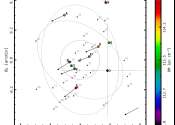NASA technology helps guard against lunar dust
Defeating dust may be a small concern for most people on Earth, but for astronauts and spacecraft destined for the moon or Mars, it is a significant hazard that must be mitigated. That's why researchers at NASA's Kennedy ...









